A Perspective on the Toxicity of Low Concentrations of Petroleum-Derived Polycyclic Aromatic Hydrocarbons to Early Life Stages of Herring and Salmon
- PMID: 22754275
- PMCID: PMC3379735
- DOI: 10.1080/10807039.2012.650569
A Perspective on the Toxicity of Low Concentrations of Petroleum-Derived Polycyclic Aromatic Hydrocarbons to Early Life Stages of Herring and Salmon
Abstract
This article presents a critical review of two groups of studies that reported adverse effects to salmon and herring eggs and fry from exposure to 1 μg/L or less of aqueous total polycyclic aromatic hydrocarbons (TPAH), as weathered oil, and a more toxic aqueous extract of "very weathered oil." Exposure media were prepared by continuously flowing water up through vertical columns containing gravel oiled at different concentrations of Prudhoe Bay crude oil. Uncontrolled variables associated with the use of the oiled gravel columns included time- and treatment-dependent variations in the PAH concentration and composition in the exposure water, unexplored toxicity from other oil constituents/degradation products, potential toxicity from bacterial and fungal activity, oil droplets as a potential contaminant source, inherent differences between control and exposed embryo populations, and water flow rate differences. Based on a review of the evidence from published project reports, peer-reviewed publications, chemistry data in a public database, and unpublished reports and laboratory records, the reviewed studies did not establish consistent dose (concentration) response or causality and thus do not demonstrate that dissolved PAH alone from the weathered oil resulted in the claimed effects on fish embryos at low μg/L TPAH concentrations. Accordingly, these studies should not be relied on for management decision-making, when assessing the risk of very low-level PAH exposures to early life stages of fish.
Figures





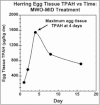




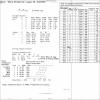
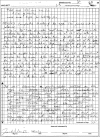
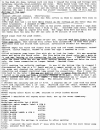
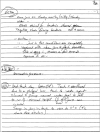
Similar articles
-
Photoenhanced toxicity of aqueous phase and chemically dispersed weathered Alaska North Slope crude oil to Pacific herring eggs and larvae.Environ Toxicol Chem. 2003 Mar;22(3):650-60. Environ Toxicol Chem. 2003. PMID: 12627655
-
Risk of weathered residual Exxon Valdez oil to pink salmon embryos in Prince William Sound.Environ Toxicol Chem. 2007 Apr;26(4):780-6. doi: 10.1897/06-414r.1. Environ Toxicol Chem. 2007. PMID: 17447564
-
Toxicity of weathered Exxon Valdez crude oil to pink salmon embryos.Environ Toxicol Chem. 2006 Apr;25(4):962-72. doi: 10.1897/05-129r1.1. Environ Toxicol Chem. 2006. PMID: 16629135
-
The importance of both potency and mechanism in dose-response analysis: an example from exposure of Pacific herring (Clupea pallasi) embryos to low concentrations of weathered crude oil.Mar Pollut Bull. 2013 Feb 15;67(1-2):7-15. doi: 10.1016/j.marpolbul.2012.12.014. Epub 2013 Jan 12. Mar Pollut Bull. 2013. PMID: 23321595 Review.
-
Characterizing Crude Oil Toxicity to Early-Life Stage Fish Based On a Complex Mixture: Are We Making Unsupported Assumptions?Environ Sci Technol. 2019 Oct 1;53(19):11080-11092. doi: 10.1021/acs.est.9b02889. Epub 2019 Sep 10. Environ Sci Technol. 2019. PMID: 31503459 Review.
Cited by
-
It's the Dose, Not the Hypothesis: Reply to.Hum Ecol Risk Assess. 2014 Apr;20(3):603-606. doi: 10.1080/10807039.2014.856214. Hum Ecol Risk Assess. 2014. PMID: 24574816 Free PMC article. No abstract available.
-
The Role of the Ecotoxicology Applied to Seafood as a Tool for Human Health Risk Assessments Concerning Polycyclic Aromatic Hydrocarbons.Int J Environ Res Public Health. 2022 Jan 22;19(3):1211. doi: 10.3390/ijerph19031211. Int J Environ Res Public Health. 2022. PMID: 35162233 Free PMC article. Review.
-
Efficient Fluorescence Detection of Aromatic Toxicants and Toxicant Metabolites in Human Breast Milk.Supramol Chem. 2017;30(4):267-277. doi: 10.1080/10610278.2017.1343947. Epub 2017 Jul 3. Supramol Chem. 2017. PMID: 30880882 Free PMC article.
-
Influence of exposure and toxicokinetics on measures of aquatic toxicity for organic contaminants: a case study review.Integr Environ Assess Manag. 2013 Apr;9(2):196-210. doi: 10.1002/ieam.1388. Epub 2013 Feb 20. Integr Environ Assess Manag. 2013. PMID: 23229376 Free PMC article. Review.
References
-
- Barnes ME, Sayler WA, Cordes RJ. Survival of rainbow trout sac fry subjected to various formalin and hand-picking regimes during rearing in vertical-flow tray incubators. N Am J Aquacult. 2002;64:129–135.
-
- Barron MG, Carls MG, Heintz R, et al. Evaluation of fish early life-stage toxicity models for chronic embryonic exposures to complex polycyclic aromatic hydrocarbon mixtures. Toxicol Sci. 2004;78:60–7. - PubMed
-
- Brannon EL, Collins KM, Brown JS, et al. Toxicity of weathered Exxon Valdez crude oil to pink salmon embryos. Environ Toxicol Chem. 2006;25:962–72. - PubMed
-
- Carls MG, Meador JP. A perspective on the toxicity of petrogenic PAHs to developing fish embryos related to environmental chemistry. Hum Ecol Risk Assess. 2009;15:1084–98.
LinkOut - more resources
Full Text Sources
